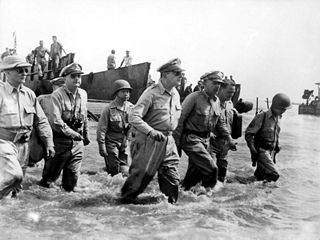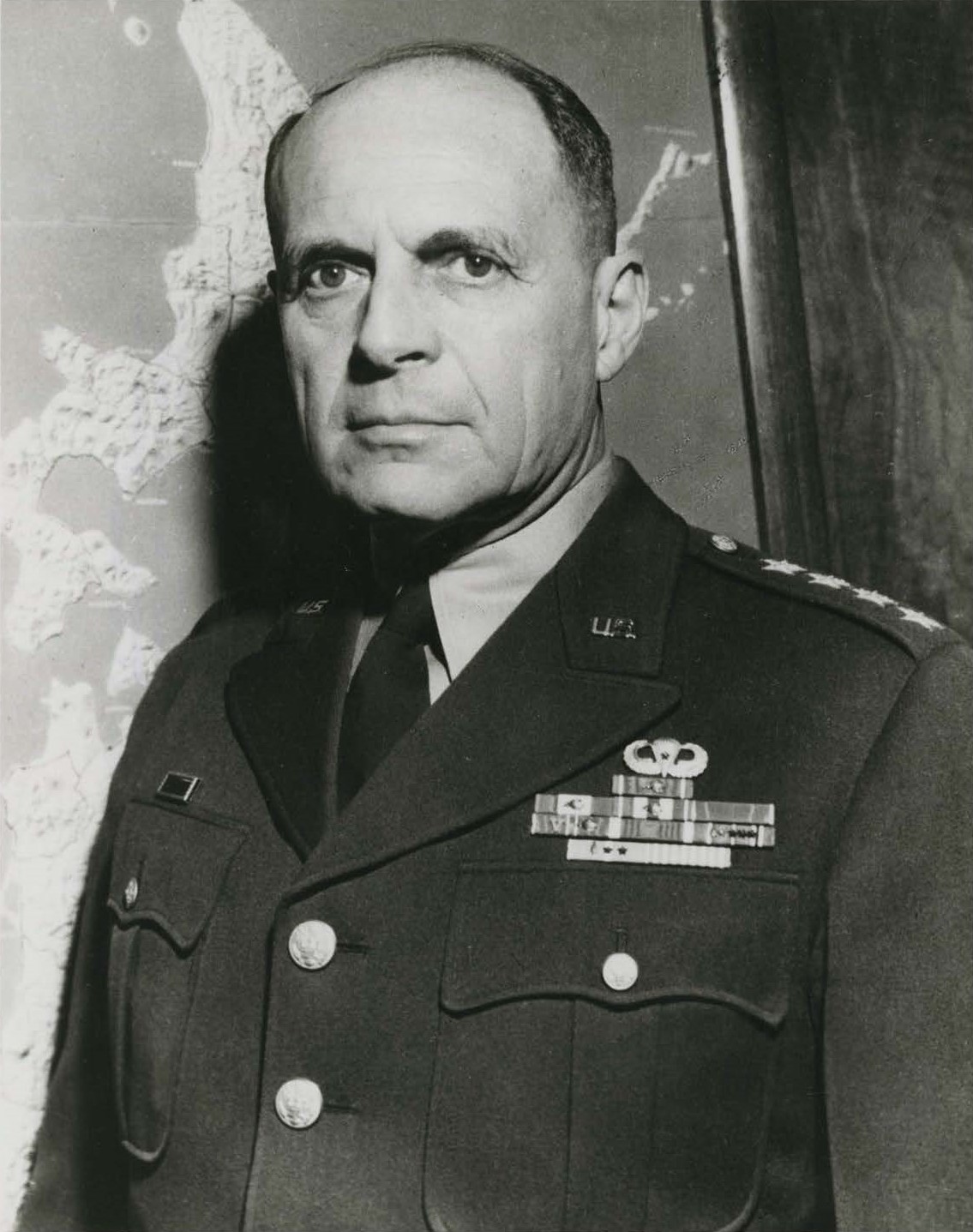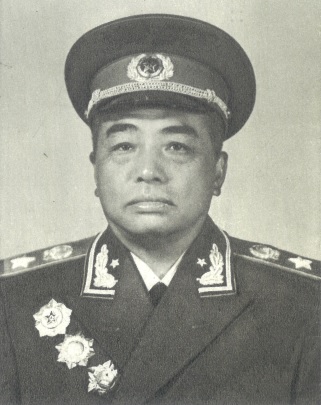The Coldest Winter: America and the Korean War
 notes pending a formal review
notes pending a formal review$9.99 ebook/ 719 pages; highly effective price point
competing against $12 - $15 histories, cf: "[b:This Kind of War|118690|This Kind of War|T.R. Fehrenbach|http://d.gr-assets.com/books/1347958618s/118690.jpg|1694719]"; the 1960s-era classic history. Halberstam, as his afterword writer notes, a journalist and inherent subscriber to "great man theory;" no broad, apersonal historic forces for him
this work a labor of 10 years+; Halberstam as reclusive old man working away at a library?

[MacArthur at Leyte, 1944]
strongly anti-MacArthur; clear division of people into good guys and bad guys (again the journalistic bias). in reality, things more complex; there are no absolute heroes or villains in this world. more importantly<---<i> Halberstam by devoting half the book to deflating the MacArthur-Myth, actually pays homage to MacArthur. the book ends up being about how 'stupid, worthless, egotistical MacArthur is' rather than the good parts, critical analysis of the war. also, it's hard on a single person to claim they're entirely wrong. history has not totally repudiated MacArthur, just feels he is a somewhat self-inflating but nevertheless competent general
unified, well-polished text =good style, less truthful?
begin in medias res (artistic device, but useful): first US contact with Chinese forces. a critical point.

claims--should deployed army have been maintained north of 38th and then supported with fire-power? may have been an even bigger fiasco... (Halberstam claims as soon as the US encountered Chinese forces, should have dug in the army in its coastal position and sought to overwhelm invaders with overwhelming firepower. yet it isn't clear the Dec.1950 positions could have been maintained== he is relying on veteran accounts of the fiasco with an investigate journalist's touch, but the grand strategy he recommends may or may not have worked considering the overwhelming manpower advantage of the PLA)
isn't this arm-chair generalship? could the US have maintained a force at the Haeju perimeter without any natural obstacles on a plain, simply with firepower, naval, and air support? an 'airhead' supplied by air? or would the forces have been overrun? as per map above, UN eventually consolidated around Line D, Suwon- just south of Wonju- jhust north of Samcheok
does a fine job with the initial ambush; and with chongyongni so-called "gettysberg" of korean war (first chinese assault turned back; UN forces surrounded and out-numbered; French present)
(most history fails to capture this key battle; attempt to adopt counter-chinese army tactic, a distinct talent set)
Korean War museum in Seoul does not play up Chongyongni
book fails to use chinese sources
book fails to use chinese terminology extensively and other such data points as even listed on wikipedia.
professional job, solid 4/5 --> considered "classic work" next to the 1960s write-up, 'This Kind of War'
172/2684
"But the Chinese had vanished, as mystesteriously as they had appeared. No one knew where they had gone. They had quietly departed the battlefield and became invisible once again. They had not, as some people in Tokyo wanted to believe, left the country."
- distinct feature of Chinese PLA; to appear and disappear, like a surge or pulse or sea; not like regimented point a to point b of western militaries
452/2684 CHAPTER NINE
"In the period before December 7...[MacArthur] had, for example, told John Hersey, then a talented young writer for Time magazine, that if the Japanese had entered the war, the British, Dutch, and Americans would be able to stop them with half the forces they had already alloted to the Pacific, and that it would be easy to bottle up the Japanese fleet."
- MacArthur's opinion regarding pre-WW2 differs from some historians, who are unsure UK and US would enter the war if Japan merely attacked Dutch Empire. Japanese planners agreed with MacArthur (that ABD was a de facto alliance), which partially motivated the strike on Pearl Harbor. History will never know, of course. (twist of irony in that MacArthur actually endorsing pre-war Japanese militarists' POV)
useful to understand distinct skill set associated w/ PLA; Chopyongni and just how late Pork Chop Hill was.
truly, KW = "the Forgotten War"
June 1950: Korean People's Army invades south in bid to unify country under communist government; southern forces collapse, retreat to Pusan perimeter
5 July - August: light US forces make contact, fall back
August - Sept 1950: Battle of Pusan Perimeter, 10-15k UN dead, perhaps double KPA
Sept 1950: MacArthur lands in Inchon
Sep 50 - Oct 50: UN forces sweep north, briefly touch Yalu
25 Oct 50: Chinese First Phase Offensive (and then they pulse down; completely unlike Western army) "pulse type" people's warfare, doctrine strongly disagreed with by Western military analysts even to this day (see Western/Australian critique of Chinese conduct in 1979 border conflict with Vietnam, e.g.; is this an example of cross-cultural confusion? Mao's People War not understood by non-indoctrinates?)
24/25 Nov 50: UN Home-by-Christmas offensive hits Chinese Second Phase offensive; Chinese win. US goes to "state of emergency" (lasts until 1978). <--unique historical curiosity of two militaries starting offensives within 24 hours of each other; not counter-offensive or pre-emptive strikes, but actual strategic, planned offenses. is this Chimerica, the mythical beast? [China and US actually share such commonalities of world view that actually they work in concert even when in conflict])<br/>

26 Dec 50: Ridgeway arrives. Halberstam positive about Ridgway even tho' Ridgeway is a MacArthur disciple too (I think)

第三次战役西线=Third Phase Campaign Western Sector
CCP forces: 170,000
UN forces: ~170,000 ? (records unavailable for total ROK strength)
each of the XXXX units is an Army, some 100000 soldiers
each of the XXX units is a Corps, some 30000+ soldiers
each XX is a division, 15000+ soldiers
thus in total, approximately 700000 soldiers are listed, which would seem to be a clear exaggeration (170000 soldiers estimated by military historians on Communist side); the Map seems to mislabel Communist Corps as Armies. should be XXX units
the Western forces at approximately 170000 is accurate.

4 Jan 51: Red Third phase offensive, Seoul falls for second time to Red armies; Washington threatening nuclear strikes on China (quietly)

CCP commander Peng Dehuai
mid-Feb 51: Chinese Fourth offensive, but critically, Chipyongni--UN forces (mostly US) discover "organized firepower" solution to Chinese light infantry horde/light infantry tactics. 2000 Chinese killed for only 50 UN casualties. so-called "Gettysburg" (high-water mark for Red). Eighth army goes to Ripper/Killer operations. People's Warfare defeated by superior US/UN logistics chain and ability to rain down artillery.

April 1951: final Red offensive; Fifth Phase or "Spring" offensive. Contained by UN. (Korean WP says 350k UN vs 340k CCP). assuming the same error is carried over form the earlier map, map still shows 400k+ CCP and 15k KPA
Korean WP states 16,000 UN casualties; 80000 Chinese
data on this offensive very sparse and contradictory. ROK collapse related? ROK army put up front?
~nothing here from Halberstam

map suffers from same flaw as other US military maps; Chinese Corps printed as Armies. estimated real strength, 240000 tops? vs. 100000 ROK plus 60000 UN? (from map?)
May 1951 - July 1953, "stalemate."
Heartbreak Ridge (9-10/51; UN victory)
Triangle Hill (10-11/52; CCP victory)
Pork Chop Hill (3-7/53; UN victory, but position abandoned)
bolded section, as per many K. War histories, not very much covered. 2 of the war's 3 years; considerable casualties, but little coverage.
Halberstam lacks air war information; some of this researched for cable TV documentaries.


